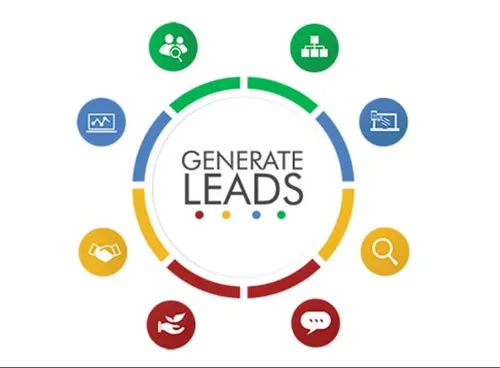Lead generation services are essential for businesses looking to expand their customer base, increase sales, and grow revenue. These services involve various strategies and tactics aimed at attracting potential customers (leads) and converting them into qualified prospects who are interested in your products or services. Here’s everything you need to know about lead generation services for your business:
- Understanding Lead Generation: Lead generation is the process of identifying and cultivating potential customers who have shown interest in your products or services. These leads are typically obtained through various marketing and advertising channels and are then nurtured through the sales funnel until they are ready to make a purchase.
- Types of Leads: Leads can be categorized into different types based on their level of engagement and readiness to purchase. These include:
- Marketing Qualified Leads (MQLs): Leads that have shown interest in your brand or offerings but may not be ready to buy yet.
- Sales Qualified Leads (SQLs): Leads that have been qualified by the sales team as potential customers who are ready to engage further and potentially make a purchase.
- Cold Leads: Leads that have shown minimal or no interest in your offerings and may require additional nurturing to become qualified prospects.
- Warm Leads: Leads that have shown some interest in your offerings but may need further engagement to move them closer to making a purchase.
- Lead Generation Strategies: Lead generation services employ various strategies and tactics to attract and capture leads. Some common lead generation strategies include:
- Content Marketing: Creating valuable and relevant content such as blog posts, articles, videos, and ebooks to attract and engage potential leads.
- Search Engine Optimization (SEO): Optimizing your website and content to rank higher in search engine results and attract organic traffic.
- Social Media Marketing: Leveraging social media platforms to reach and engage with potential leads through content sharing, community building, and targeted advertising.
- Email Marketing: Building and nurturing relationships with potential leads through targeted email campaigns, newsletters, and lead nurturing sequences.
- Paid Advertising: Investing in paid advertising channels such as Google Ads, social media ads, display ads, and sponsored content to reach your target audience and drive traffic to your website.
- Lead Magnets: Offering valuable incentives such as ebooks, guides, webinars, or free consultations to attract potential leads and capture their contact information.
- Lead Capture and Management: Once leads are attracted, it’s important to capture their contact information and manage them effectively. This involves:
- Using lead capture forms on your website and landing pages to collect contact information from potential leads.
- Implementing lead management systems and CRM software to organize, track, and nurture leads through the sales funnel.
- Implementing lead scoring and qualification processes to identify and prioritize high-quality leads for further engagement by the sales team.
- Lead Nurturing: Lead nurturing is the process of building relationships with potential leads and guiding them through the sales funnel until they are ready to make a purchase. This involves:
- Sending targeted and personalized content to leads based on their interests, preferences, and behavior.
- Providing value through educational content, product demonstrations, case studies, and testimonials to address leads’ needs and overcome objections.
- Engaging leads through various communication channels such as email, social media, and direct outreach to build trust and rapport over time.
- Measuring and Optimizing Performance: It’s important to track and measure the performance of your lead generation efforts to determine what’s working and what’s not. This involves:
- Monitoring key metrics such as website traffic, conversion rates, lead quality, cost per lead, and return on investment (ROI).
- Analyzing data to identify trends, patterns, and areas for improvement in your lead generation strategies.
- Testing and optimizing different elements of your lead generation campaigns, such as ad creative, messaging, targeting, and landing page design, to maximize results.
- Choosing a Lead Generation Service Provider: When selecting a lead generation service provider for your business, consider factors such as:
- Experience and expertise in your industry or niche.
- Track record of success and client testimonials.
- Range of services offered, including strategy development, implementation, and measurement.
- Transparency, communication, and collaboration throughout the lead generation process.
- Pricing structure and affordability based on your budget and business goals.
Overall, lead generation services play a crucial role in helping businesses attract, capture, and convert potential customers into qualified prospects and ultimately drive business growth and success. By understanding the key principles and strategies of lead generation and working with the right service provider, you can effectively generate leads and achieve your business objectives.


